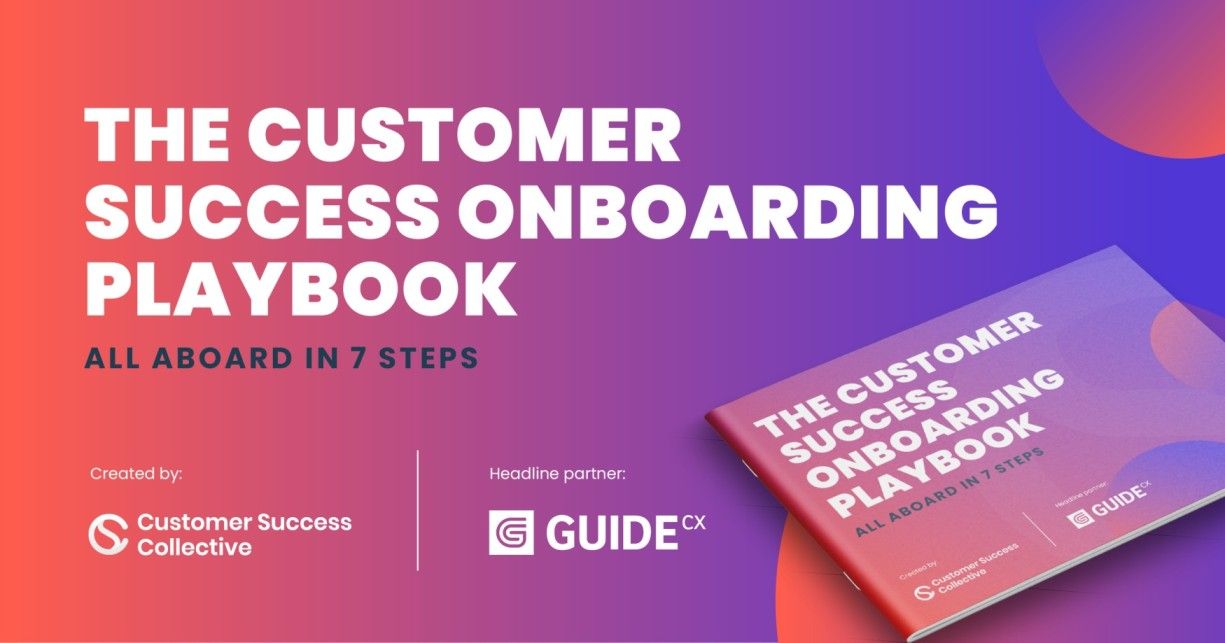No matter what industry you’re in, your company’s success is tied to each client’s success. If your products and services truly meet your clients’ needs and exceed their expectations, you can build an outstanding reputation among your competitors.
But your products and services aren’t the only things that drive your company’s reputation and long-term success. Customer experience is also crucial. You need to ensure you’re giving your customers all the support, training, and resources they need to start using your products as soon as possible. Once they’re fully up and running, they can experience all the benefits of working with you.
The experience you give your customers starts on the first day of onboarding/implementation. So it’s crucial to design an onboarding process that gives your customers (and your internal stakeholders) the best experience possible.
What is client onboarding?
Sometimes called implementation, customer onboarding is the process of integrating new customers into your business (or, depending on your business model, deploying your product into the customer’s workflow). The onboarding phase generally encompasses everything from sales handoff to “go live.”
In other words, onboarding takes the customer from signing the contract to becoming a full user of your product. Customer onboarding generally includes product delivery, user training, and customer feedback. A well-designed, efficient onboarding process sets your customers up for success and gives them an outstanding experience from day one.
By optimizing your onboarding process, you can reduce customer churn and secure each customer’s loyalty early on.

How does onboarding impact your customers’ success?
Supporting your customers’ success isn’t just about the products and services you provide. It’s also about the overall experience you offer your customers. And that experience starts the moment your sales team passes a new client along to the customer onboarding team.
From the very beginning of the implementation process, you’re either supporting or hindering your clients. If you provide comprehensive training, excellent customer support, and a short time-to-value, you drive your customer’s success. They get the full benefits of your product as soon as possible, and you set the stage for a long, mutually beneficial working relationship.
On the other hand, if you’re communicating poorly, missing delivery dates, and failing to show your customer a return on their investment, you’re hampering their potential success. A long, confusing implementation process will frustrate your customers and prevent them from seeing the benefits they were promised by the sales team.
Obviously, an efficient, effective onboarding process offers the most benefits to your customers. And customers know this! According to one survey, 63% of customers say that they consider onboarding when making a purchasing decision, and 88% say they’re more likely to remain loyal to a business that invests in the onboarding process.
Clearly, customer onboarding is a part of your business practices that you can’t ignore. A well-designed customer onboarding plan serves your clients, reduces delays and errors, and maximizes your team’s productivity.
Client onboarding best practices
So, what are the keys to an outstanding customer onboarding experience that benefits internal and external stakeholders? Follow these best practices.
1. Define the onboarding process
Start by determining exactly what onboarding looks like for your organization. For example, a large corporation may have a dedicated onboarding team whereas a smaller business may roll onboarding into the customer service or training department’s responsibilities. Either way, make sure that everyone in your organization understands what onboarding means and who will be involved in the process.
Then, develop a clear outline of the process from start to finish. Clarify dependencies, deliverables, and milestones. It’s also a good idea to identify an approximate timeline and end date. Remember, the sooner you can wrap up onboarding, the shorter your customers’ time-to-value will be.
Strive for efficiency, but don’t skip steps just to make the process faster.
If your customers get to the end of onboarding without all the tools they need to use your product, they’ll be frustrated and might even consider churning and leaving. Survey results show that over half (55%) of users have returned a product because they didn’t know how to use it.

2. Set expectations
Next, set clear, reasonable expectations for your team and your customers. You want everyone to be on the same page in terms of deliverables, responsibilities, and end dates. Clarify what your team will provide to your customers and what you expect your clients to provide.
Give new customers a timeline and a list of “next steps” so they know what to expect right away instead of waiting to see what each step in the implementation process is. You don’t want them to feel forgotten about or confused, and they should know exactly who to contact if they need support throughout the process.
3. Identify stakeholders
For onboarding to work well, everyone must understand who is involved and which person (or team) is responsible for each task. The implementation process includes people from your company and your customer’s organization. Identify those people as early as possible and gather their contact information so you can begin communicating with them.
With internal stakeholders, it’s all about clarifying responsibilities and hierarchies. Give your team a clear understanding of what they’re expected to provide and who they should report to.
4. Prioritize communication
Poor communication is one of the most common issues in the onboarding process. It’s critical to maintain excellent communication with new customers as soon as onboarding starts. Ideally, they should feel like they’re receiving the same level of support and communication from the implementation team that they got from the sales team.
How do you ensure excellent communication during onboarding? Leverage automation! Manual processes like voice calls and one-off emails are inefficient and prone to errors. Instead, find a solution that automates communications whenever possible.
GUIDEcx keeps all stakeholders informed throughout the process via automated notifications. Our platform sends updates when tasks are assigned, completed, or delayed. Plus, it includes real-time updates for end dates and offers customers a transparent view of the process, eliminating time-consuming requests for information and manual status updates.

Why GUIDEcx client onboarding software?
- Reduce anxiety, increase participation
- Complete control over visibility settings
- No login required for participants
- Complete tasks via portal, email, or mobile app
- Automate project updates, tasks, and reminders
Define your task management procedures
Effective task management is a crucial aspect of a solid onboarding experience. Onboarding typically involves several individuals in your company and your client’s organization. Each person has unique responsibilities that often inform other tasks and steps in the process.
Develop task management procedures that allow you to set dependencies and clarify responsibilities. This is another area where automation can be extremely useful. A good task management platform should automatically manage task assignments, dependencies, and updates so that everyone knows exactly what’s going on at all times.
Monitor customer satisfaction
Many organizations wait until the end of onboarding to assess customer satisfaction and ask for feedback. But if the customer is dissatisfied, this could be too late! It’s far better to continually monitor your customer’s experience throughout the onboarding process.
One option is to request feedback at each milestone. The GUIDEcx platform features an integrated CSAT (customer satisfaction) tool that makes it easy to automatically gather data from customers.
Another advantage of getting feedback during onboarding is that it makes it easier to spot problems and address them as soon as possible. Plus, if you onboard several customers at a time, one client’s feedback can help you make changes to the process sooner, improving the onboarding experience for your current and future customers.

Address delays
No one likes delayed projects. But delays during onboarding can be especially frustrating for clients because they extend time-to-value. The customer has to wait longer to see whether their investment in your product was really worth it.
Plus, the longer the customer has to wait before they can begin fully using your product, the longer they are operating without all those benefits. In other words, onboarding delays prevent you from supporting your customers’ success.
A well-designed process is the first step toward eliminating delays and shortening TTV. Then, continue to monitor each of your customers during onboarding to identify one-off or consistent issues, and make changes to address those.
Increasing transparency can help minimize delays, especially those that are caused by missed tasks or undefined dependencies. By giving your customers a big-picture view of onboarding, you reduce the chance of delays that happen because clients don’t know their responsibilities or understand their place in the overall process.
Increase efficiency
Of course, efficiency is a vital aspect of your customer’s experience during onboarding. An efficient process supports your company’s reputation and drives your client’s success. Communication, task management, and a well-designed onboarding process are the keys to efficiency. So following the best practices outlined here will help you build an onboarding process that’s as efficient as possible.
Facilitate your customers’ success
Your customers’ success drives your company’s long-term performance. It’s crucial to spend the time and resources to develop a customer onboarding strategy that gives everyone involved an exceptional experience.
Often, the biggest challenges to a successful onboarding come from miscommunication. Without clear, continuous communication, tasks get delayed and people get frustrated. GUIDEcx solves those issues by providing a dedicated onboarding platform that facilitates communication and clarifies responsibilities for internal and external stakeholders.
With GUIDEcx, everyone can see exactly what they need to do, when they need to do it, and how their actions affect the overall process. This platform gives your team the tools they need to exceed client expectations. Plus, intuitive features like The Compass Experience simplify the process for clients, showing them only what they need to know in a clear, easy-to-use interface.
Learn more about GUIDEcx
Discover our prepackaged solutions or configure a package for your company. Learn how to be up and running in days and benefit from unbeatable performance and customer satisfaction.


